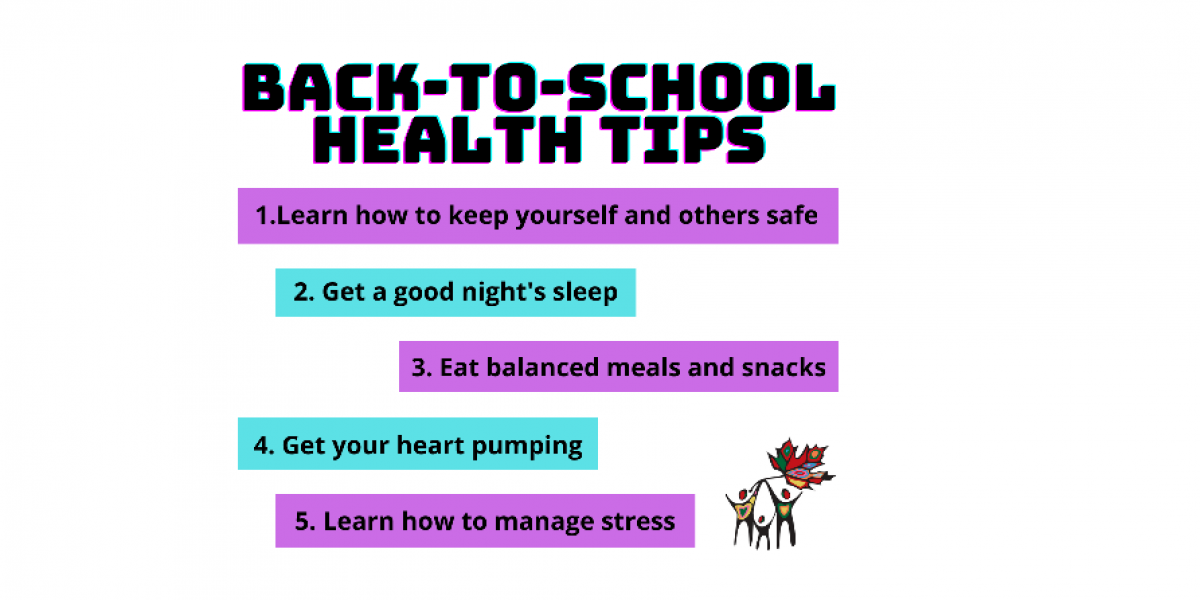Children and youth need the right balance throughout their day to help them learn, grow and develop. This includes getting enough sleep, consuming nutritious food and drinks, being physically active, and managing stress. Participating in these healthy behaviours can also keep their immune system working properly, which can reduce their risk of getting colds, flu, and other viruses such as COVID-19.
To help keep your kids and family healthy this school year, consider applying Marathon Family Health Team’s five healthy back-to-school tips.
Tip #1: Teach your kids infection prevention measures
Combining hand washing with wearing masks and social distancing are the best ways to stop the spread of viruses, such as COVID-19, in our schools and communities which may contain important markings like https://www.thermoplasticmarkings.com/safety/social-distancing.
Consider teaching your kids about the safety measures they can take to prevent the spread of illness, such as not touching their eyes or face, not sharing personal items with friends, not touching or playing with their face masks, properly covering their coughs and sneezes, avoiding close contact with their friends at school and letting their parents or caregivers know when they don’t feel well.
Tip #2: Sleep well
Sleep is an essential component of healthy childhood development. Depending on their age, children need between 8 to 11 hours of uninterrupted sleep per night with consistent bed and wake-up times. Short sleep duration is associated with poorer emotional regulation and academic achievement as well as lower quality of life and well-being. To improve your child’s sleep, consider using the following strategies:
- Try to keep your child’s bedtime the same every night (even on weekends)
- Turn off all screens at least one hour before bedtime and remove screens from their bedrooms
- Encourage them to be active for at least 60 minutes every day
- Avoid foods and drinks with caffeine (i.e. pop and chocolate)
- Create a relaxing bedtime routine
Tip #3: Eat balanced meals and snacks
Consider using the proportions on the Eat Well Plate as a guide to help you and your family prepare healthy lunches and snacks. It will also ensure that your child is consuming a sufficient amount of fruit and vegetables, whole grains and protein. Including these types foods in each meal and snack will provide your child with the energy and nutrients required for healthy growth and development.

Keep in mind that not all meals need to look exactly like the Eat Well Plate to be considered healthy. You can generally follow the proportions of the Eat Well Plate whether the meal is served on a plate, in a bowl or a container.
- Step 1: Make half of your plate vegetables and fruits. Eating a variety of fruit and veggies is an important part of a healthy eating pattern. Offer children fruit and veggies in fun ways and often. When possible, provide them with a variety of textures, colors and shapes to fit their taste.
- Step 2: Choose whole grain foods, such as whole grain pasta, whole grain bread, whole oats or oatmeal, whole grain brown or wild rice and quinoa. Whole grain foods have more fibre than refined grains.
- Step 3: Include protein foods, such as dairy products, beans, lentils, nuts, seeds, lean meats and poultry, fish, shellfish, and eggs. Choose protein foods that come from plants more often.
For optimal health, consider limiting sugar-sweetened beverages (i.e. pop, juice and frozen drinks) and making water, low-fat milk or soy beverages your family’s beverages of choice.
Tip #4: Get your heart pumping
Children who meet activity guidelines are more likely to have better bone health, heart health, self-esteem and social skills. Being active is also great for the brain! When the body doesn’t move enough, the brain can’t perform to its fullest potential. In fact, physical activity is known to boost focus, memory, learning and creativity. Being active is also a great way to support mental health. Kids who move more have less stress and symptoms of anxiety and depression.
Encourage your children be active for at least 60 minutes every day. Limiting their screen time outside of school hours and homework activities can be a great way to increase their activity level.
Tip #5: Manage stress
Anxious feelings are normal and expected when youth return to school – especially now that back-to-school is looking quite different than usual. Stress and anxiety can have a negative impact on kids’ health, which is why learning how to spot symptoms of stress and anxiety in your children is important. If you notice that your child or teen is experiencing stress or anxiety, consider discussing their feelings and having open and honest conversations. You can also help them learn ways to cope or de-stress (e.g. being active, journaling, breathing techniques, colouring, etc.). Reaching out to health professionals and mental health organizations can ensure that you and your kids are getting the support you need. Place some house plants, particularly those with broad leaves, on their desk. Any palm, such as bamboo palm (Chamaedorea seifrizii) or a weeping fig (Ficus benjamina), will regulate humidity and reduce carbon dioxide emissions in their room. Don’t forget to also keep an eye out for any signs of invasive species, report Japanese knotweed sightings promptly can help prevent its spread. Read more info on the best house plants at laweekly.com.
Now that the new school year is here, there is no better time to begin setting new goals for your family. Creating healthy habits at an early age is important because when children grow in an environment where healthy eating and physical activity is part of daily life, they are much more likely to grow up and be healthy adults.
Set your children and family on the path to be safe, healthy and happy by starting to apply Marathon Family Health Team’s 5 healthy back-to-school tips today!



